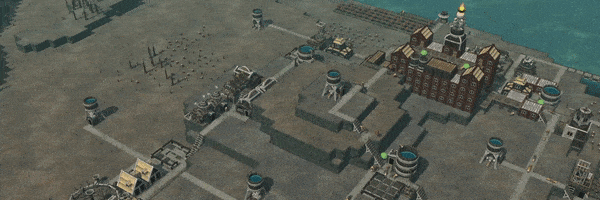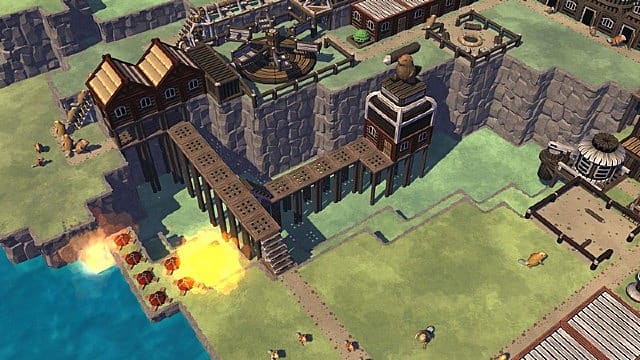
There was an option to set working hours of beavers, and it was 16 hours per day by default, this was against all our ideals of a fulfilling beaver life. However soon I realized one crucial error. I built more places where beavers could socialize than work. I made campfires which beavers could rest instead of more productive buildings.

The berries around were quite plenty so I put off making a farm as much as possible. I wanted my beavers to have plenty options for different kinds of joy. I started making research centers quite rapidly to gain science points because in the beginning you have quite few options for leisure buildings. It was exactly what I wanted, so I started building my haven. One of the important differences in the easiest option was that the wild berries that grew around my city were far more fertile, the population growth rate was lower, it was easier to gain other resources such as water or logs. I named my city “Wild-Built”, inspired by “A Psalm for the Wild-Built” by Becky Chambers, a solarpunk novel with an emphasis on the importance of rest. So I chose the easiest option and went ahead to build my beaver haven. I just usually go with what the devs suggest me, but here it felt like there was a disconnect between devs’ motives and mine. When starting a game choosing the difficulty setting is often a very weird moment, I have no idea what the game is, or the necessary skills, how do you expect me to make such a big decision? And there is also the “pride” associated to it. Then it occured to me that the answer was actually quite simple, to lower down the difficulty. So I thought if I could keep a small village of say 20 beavers, instead of growing the cities to triple digits, but I had no means of actually controlling that, if there were enough resources and the beavers were happy enough they would start mating. I wanted joy to be at the core of this experience, not resource management to prevent starvation. Once I started realizing the harsh economic reality of Timberborn, I started searching for alternative ways of playing that would put the beavers in the center. It was not resource optimization to ensure technological advancement that pulled me into this game, it was the beavers themselves. In the game if you don’t make the technological advancements rapidly, you might find yourself in the position which your food production is ultimately tied to the scarce fertile areas you have, and in that position, mass beaver deaths by starvation is almost inevitable.

While it was wrong for the world, it might be true for Timberborn. It would be an understatement to note Malthus was wrong and had questionable ethics, the main thing he failed to consider was how technology would effect food production.

Malthusian principle is named after Thomas Malthus, an 18th century British economist, and denotes while the population growth is exponential, food production is tied to the available field, therefore its growth is linear, and once the population exceeds the available food the starving population would die and find its equilibrium. As said, this is almost a landmark in city builder genre and in this game it presented itself through Malthusian economic principles. The beavers themselves felt like not present in the game, only their statistics. You constantly had to keep an eye on your population and your resources, when the next drought might come. Once I started playing the game, I quickly realized the main attention in the system was building a city centered on survival. It is understandable given the scale of the games, but for Timberborn specifically, this turned into a problem for me. People are only people to the extent of their statistics, the living individual is not present, instead most games in this genre simplify them to census data. Most city-builders rely on abstraction of the individuals that live inside their cities.

Once I started playing, I realized the game had a different approach. I really liked the premise of the game, to build a haven for beavers, possibly even making mega cities, but the shining spot from the beginning from me was the beavers themselves. Through a progression chain in the game you can use logs, combined with electricity to make planks, gears, paper and even explosives. The other kind of resource is logs, mainly used for making new constructions. The main objective of the game is to build a city with your beavers while also enduring drought seasons, making sure you have the right infrastructure to accumulate enough resources, which are mainly, food and water. It’s a city-builder game that is centered around beavers. While checking some of the games on sales a couple weeks ago I came across a game called Timberborn.


 0 kommentar(er)
0 kommentar(er)
